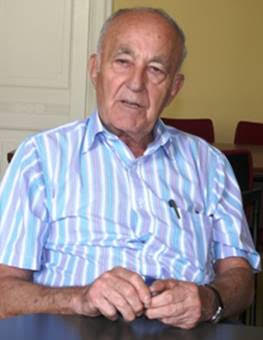
THE VOICE OF INTERNATIONAL LITHUANIA
|
VilNews has its own Google archive! Type a word in the above search box to find any article.
You can also follow us on Facebook. We have two different pages. Click to open and join.
|
Author Archive
- Posted by - (0) Comment
Time for ŠAŠLYKAI,
the Lithuanian barbeque
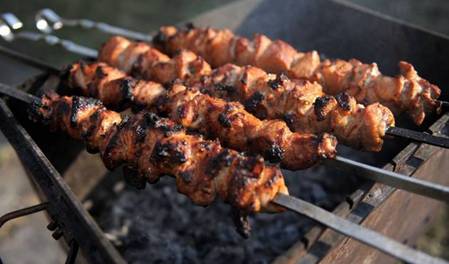
Dark grey days and cold nights are soon here again as autumn is making its way back to Lithuania. The summer season is coming to an end, but the early autumn sunshine will still be very much welcomed, somewhere in nature or in a garden, where the people of Lithuania still will be enjoying the typical early autumn sun with a tasty, warming šašlykai prepared over the charcols.
- Bookmark :
- Digg
- del.icio.us
- Stumbleupon
- Redit it
- Posted by - (9) Comment
Time for ŠAŠLYKAI,
the Lithuanian barbeque

Dark grey days and cold nights are soon here again as autumn is making its way back to Lithuania. The summer season is coming to an end, but the early autumn sunshine will still be very much welcomed, somewhere in nature or in a garden, where the people of Lithuania still will be enjoying the typical early autumn sun with a tasty, warming šašlykai prepared over the charcols.
Šašlykai or Shashlik is a form of Shish kebab popular throughout the former Soviet Union, Eastern Europe, Pakistan, Mongolia, Iran and Israel among other places. Shashlik (meaning skewered meat) was originally made of lamb (in some extent pork or beef) depending on local preferences and religious observances. These skewers of meat are either all meat, all fat, or alternating pieces of meat, fat, and vegetables such as bell pepper, onion, mushroom and tomato.
Meat for shashlyk (as opposed to other forms of shish kebab) is usually marinated overnight in a high-acidity marinade like vinegar, dry wine or sour fruit/vegetable juice with the addition of herbs and spices. While it is not unusual to see shashlik listed on the menu of restaurants, it is more commonly sold in Western Asia by street vendors who roast the skewers over wood, charcoal, or coal. Shashlik is usually cooked on a grill called a mangal.
- Bookmark :
- Digg
- del.icio.us
- Stumbleupon
- Redit it
- Posted by - (0) Comment
Ready for a
mushroom hunt?
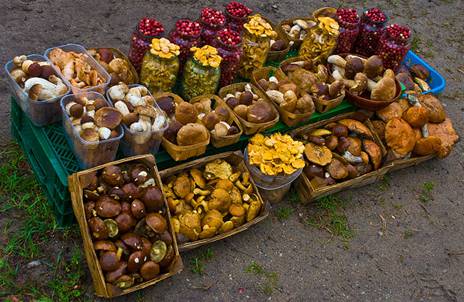
Mushroom ‘outlet’ at a Varena roadside.
Mushroom picking is undoubtedly one of the favourite activities of the Lithuanian people. It starts in the spring and lasts till the first frosts, normally early November. Mushroom hunting is probably Lithuania’s second most popular sport, after basketball. When rumours start to float around that the first mushrooms of the year have been seen in the woods, people get up at 6 am on Saturday morning and go to the woods with their baskets and plastic bags. You can actually experience traffic jams at that time on a Saturday morning! Entire families go mushrooming and return with overflowing baskets.
The most abundant forests are in Dzukija, the south eastern region. Traditionally the inhabitants of this part of the country are the most prolific mushroom gatherers and this region's cooks are known for the most creative mushroom recipes. The mushroom capital of Lithuania is the town Varena, founded in 1862 as centre of the Varena District.
- Bookmark :
- Digg
- del.icio.us
- Stumbleupon
- Redit it
Ready for a mushroom hunt?
- Posted by - (4) Comment

Mushroom ‘outlet’ at a Varena roadside.
Mushroom picking is undoubtedly one of the favourite activities of the Lithuanian people. It starts in the spring and lasts till the first frosts, normally early November. Mushroom hunting is probably Lithuania’s second most popular sport, after basketball. When rumours start to float around that the first mushrooms of the year have been seen in the woods, people get up at 6 am on Saturday morning and go to the woods with their baskets and plastic bags. You can actually experience traffic jams at that time on a Saturday morning! Entire families go mushrooming and return with overflowing baskets.
The most abundant forests are in Dzukija, the south eastern region. Traditionally the inhabitants of this part of the country are the most prolific mushroom gatherers and this region's cooks are known for the most creative mushroom recipes. The mushroom capital of Lithuania is the town Varena, founded in 1862 as centre of the Varena District. Due to lower harvests in infertile soil, local farmers had to supplement their yields with edible mushrooms and berries collected in the forests. Still today mushroom collecting remains an important part of the local economy.
All over Lithuania mushrooms are used in many dishes, to add special flavor to meat, fish and potato dishes. Mushrooms are used fresh, dried, salted or marinated. More than four hundred edible varieties are found in the Lithuanian forests. The most popular are boletes. Also collected are chanterelles, blevits, morels and many others.
Mushroom recipes from the book LITHIANIAN TRADIONAL FOOD
Compiled by Birutë Imbrasienė
Edited and translated by Giedrė Ambrozaitienė
Keptos grybų kepurėlės
1/2 k (1 lb) fresh boletus or button mushroom caps
100 g (6 tablespoons) butter
2 tablespoons flour
salt and pepper to taste
Wash mushroom caps, blot dry and roll in flour, seasoned with salt and pepper. Fry floured mushroom caps in butter on low heat until nicely browned, about 20 minutes.
Serve with hot potatoes or bread for lunch or as a late afternoon snack.
FRIED MUSHROOMS WITH ONIONS
Kepti grybai su svogūnais
1/2 k (1 lb) fresh boletus or white or brown, mushroom caps
200 g (3/4 cup) vegetable oil
3 onions, diced
several bay leaves
pinch of salt and pepper
Drop dry mushroom caps into hot oil and fry on low heat, about 20 minutes. Add onions, seasonings and fry for 5 more minutes.
Serve warm fried mushroom caps with hot potatoes and cold caps with toasted black bread.
MUSHROOMS SIMMERED IN SOUR CREAM OR MILK
Grybai troškinti grietinėje ar piene
1/2 k (1 lb) fresh mushrooms
100 g (6 tablespoons) butter
2 onions, finely chopped
4 tablespoons sour cream or 1 cup milk
salt and pepper to taste
Brush mushrooms clean. Slice and cook in a frying pan, in their own juices. Cook until all liquid evaporates. Add butter and onion to mushrooms, bake for 15 minutes. Pour sour cream or milk and simmer for 5 minutes.
Serve for lunch with hot potatoes or bread.
MUSHROOMS IN A BLANKET
Kepti grybai tešloje
1/2 k (1 lb) fresh mushrooms
100 g (3 oz) butter or vegetable oil
1 egg, beaten
2 tablespoons flour
2 tablespoons bread crumbs
pinch of salt
Brush mushrooms clean, cut in halves and dust with salted flour. Dip mushroom halves into egg and roll in bread crumbs. Fry breaded mushrooms in hot oil or butter. Place fried mushrooms on a baking sheet and bake in preheated oven at 250F/120C, for about 10 minutes.
Serve with bread or hot potatoes for breakfast, lunch or as a late afternoon snack.
CHANTERELLES WITH BACON
Voveruškos su lašiniukais
1/2 k (1 lb) fresh chanterelles
100 g (3 oz) bacon, finely cut
2 onions, finely chopped
salt and pepper to taste
Wash chanterelles and drop into salted, boiling water. Cook about 15 minutes. Fry bacon and onion, add cooked chanterelles and a pinch of salt and pepper. Cover frying pan and continue baking for 10 minutes, stirring several times.
Serve for lunch with hot potatoes.
BRAISED MUSHROOMS WITH POTATOES
Troškinti grybai su bulvėmis
10 potatoes, peeled and cubed
1 k (2 lbs) fresh mushrooms
100 g (3 oz) bacon, finely cut
2 onions, chopped
1 cup sour cream
salt and pepper to taste
Cook potatoes until soft, drain and save potato cooking water. Fry bacon and onion. Cook mushrooms in salted water for about 20 minutes. Drain and cut mushrooms into halves. Add mushrooms to fried bacon and onion mixture. Simmer for 2-3 minutes. Sprinkle with salt and pepper, add 1/4 cup potato water and simmer for 5 minutes. Pour simmered mushrooms over boiled potatoes, mix well. Pour sour cream on top just before serving for lunch.
FRIED DRIED MUSHROOMS
Kepti džiovinti grybai
100 g (3 oz) dried mushrooms
3 tablespoons flour
150 g (6 oz) butter or vegetable oil
1 cup milk
salt to taste
Soak dried mushrooms in milk for 3 hours. Blot dry and roll in salted flour. Fry in hot fat, on both sides, about 25-30 minutes.
Serve hot, covered with pan juices.
MUSHROOM PATTIES
Grybų maltinukai
1 k (2 lbs) fresh mushrooms
3 eggs
2 onions, chopped
2 tablespoons sour cream
200 g (3/4 cup) butter
1 tablespoon flour
1 cup bread crumbs
salt and pepper to taste
Cook mushrooms, drain and chop finely. Fry onion in 2 tablespoons butter. Add beaten eggs to sour cream, mix well. Add fried onion, salt, pepper, mushrooms and bread crumbs. Blend well and let set for 1/2 hour. Then form medium patties, roll patties in flour and fry in hot butter, both sides, for about 25-30 minutes.
Serve hot for lunch with hot potatoes and dill pickles.
MUSHROOM EARS
Ausytės su grybų įdaru
3 cups flour
3 eggs
water
2 cups cooked mushrooms, finely chopped
1 onion, chopped and fried
2 tablespoons butter
2 tablespoons sour cream
salt and pepper to taste
Make dough with first 3 ingredients. Roll out dough thinly and cut into squares. To make filling, add 1 beaten egg, fried onion, pinch of salt and pepper to mushrooms. Blend well. Place a spoonful of mushroom mixture, fold over into a triangle, seal edges and join corners together. Cook mushroom ears in salted water 5-7 minutes. Drain and place mushroom ears into a bowl and cover with butter cooked with sour cream.
Serve hot.
MUSHROOM STUFFED EGGS
Grybai kiaušiniuose
8 eggs
5 mushroom caps
1 cup cooked, chopped mushrooms
1 cup sour cream
100 g (6 tablespoons) butter
onion greens or scallions fresh dill
salt and pepper to taste
Hard boil 7 eggs. Peel 5 eggs and cut off tops, scoop out yolks. Fry mushroom caps in butter. Add 2 finely chopped, hard boiled eggs, 5 scooped out yolks and 1 beaten egg to chopped mushrooms. Mix well and fry mixture in butter for 10 minutes. Fill 5 eggs with mushroom mixture, cap filled eggs with fried mushroom caps. Stand eggs in a serving platter, cover with sour cream, seasoned with salt and pepper and sprinkle with chopped scallions and dill.
This is eaten as a snack or light lunch with toasted white or black bread.
MUSHROOM CAKE
Grybų tortas
1 k (2 lbs) fresh mushrooms
3 raw eggs, beaten
4 tablespoons bread crumbs
1 cup sour cream
2 onions, chopped, fried
2 hard boiled eggs, chopped
2 tablespoons flour
50 g (4 tablespoons) vegetable oil
salt and pepper to taste
Cook mushrooms, drain and blot dry, cut into small pieces. Add onion, hard boiled eggs, bread crumbs, beaten eggs, salt and pepper. Blend all ingredients well. Grease a spring form cake pan and fill with mushroom mixture, sprinkle top with flour and bake in preheated oven at 350F/180C, for about 30 minutes.
This is eaten hot and cold.
- Bookmark :
- Digg
- del.icio.us
- Stumbleupon
- Redit it

Lithuania offers a modern, international cuisine
fully on par with western Europe.
Text: Aage Myhre
Did you think that this country only offers traditional food? Think again… Today’s situation is that numerous Lithuanian restaurants follow the best world traditions of offering exceptional international cuisine, as well as a number of Lithuanian masterpieces, first-class service in surroundings of refined elegance and impeccable hospitality. Modern Lithuania’s excellent cuisine together with a high class service will leave you a memorable experience.
Let me bring you to some of my favourite international cuisine restaurants, this time unfortunately only in Vilnius!
- Bookmark :
- Digg
- del.icio.us
- Stumbleupon
- Redit it
- Posted by - (0) Comment
Welcome to Lithuanian Heritage Night
Roslyn, State of Washington, Saturday, Sept. 1
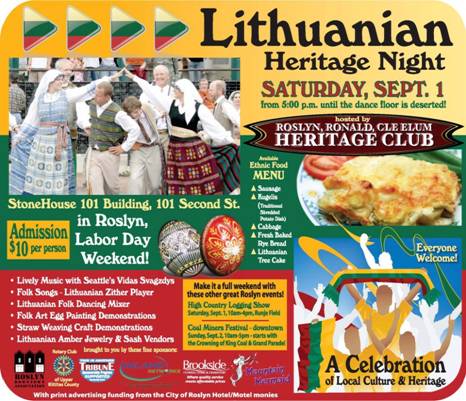
- Bookmark :
- Digg
- del.icio.us
- Stumbleupon
- Redit it
- Posted by - (0) Comment
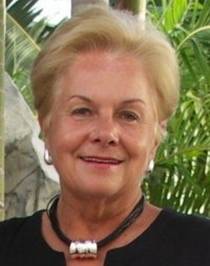
Danguolė Navickienė
New head of the Lithuanian World Community (LWC)
New Leader and new Board of Lithuanian World Community was elected during the 14th World Lithuanian symposium held in August in Vilnius. Danguolė Navickienė replaced Regina Narušienė, who chaired the LWC Board for six years.
On August 22 in Vilnius, Vice-Minister of Foreign Affairs of Lithuania Asta Skaisgirytė Liauškienė met Ms. Navickienė and the Representative of the community in Lithuania, Vida Bandis. It was agreed to continue strengthening the cooperation between the Ministry of Foreign Affairs and LWC and to put into the practice the idea of Global Lithuania.
“Cooperating for a common goal and using the nowadays opportunities, we have to turn the idea of Global Lithuania into reality and take the relations between Lithuania and Lithuanian diaspora to a new quality level”, the Vice-Minister of Foreign Affairs of Lithuania said.
Read more…
- Bookmark :
- Digg
- del.icio.us
- Stumbleupon
- Redit it
- Posted by - (0) Comment

Carol Luschas, Pennsylvania, USA
New ideas for
Lithuania?
Now this small Baltic Republic must look towards itself to inspire a new generation to have a sense of national pride, spirit, and above all hope for the future. The country needs to believe that giving back is ultimately about serving others and having a positive impact on people's happiness, health and well-being.
- Bookmark :
- Digg
- del.icio.us
- Stumbleupon
- Redit it
- Posted by - (0) Comment
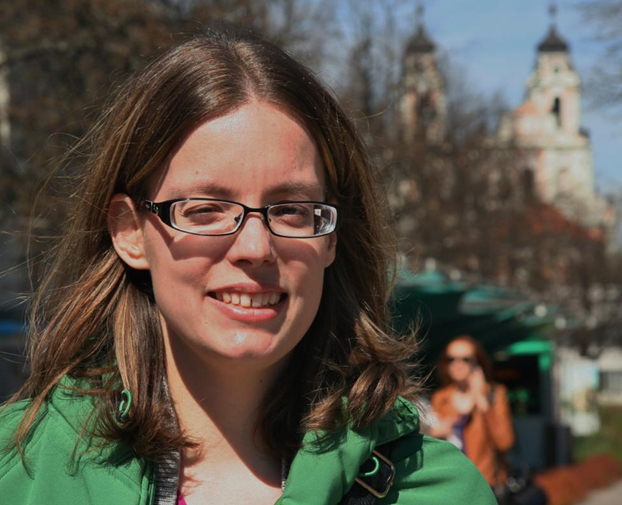
Carol Luschas, Pennsylvania, USA
New ideas for Lithuania?
Since the fall of the Soviet Union, Lithuania has struggled to define itself. It turned its back to "Mother Russia" and looked toward the west becoming a member of NATO and later formed and economic union by joining the EU. Unfortunately, the "Baltic Brain Drain" is still occurring, as the youth have their sights set on the West seeking comfort of material wealth and goods accompanied with a lack of a moral compass, values or care and compassion for humanity. This is extremely dangerous and is causing Lithuania to collapse and fall behind.
Now this small Baltic Republic must look towards itself to inspire a new generation to have a sense of national pride, spirit, and above all hope for the future. The country needs to believe that giving back is ultimately about serving others and having a positive impact on people's happiness, health and well-being. Each citizen has a common mission and holds a moral responsibility to relinquish the gift of time to improve their country and make it a better place. For "we make a living by what we get. We make a life by what we give."
More attention needs to be given to developing small businesses, industry, technology, and real estate opportunities throughout Lithuania. I admire the mayor of Vilnius, Arturas Zuokas for his effort to create a business district similar to New York's Manhattan. But the modern cityscape competes with lovely panorama of the Old Town. Vilnius is a city that takes pride in being a heavily forested and environmentally friendly. I hope the Old Town will never lose its charm and continue to expand, reconstruct, and refurbish the beauty of this green lovely Old Town.
More effort needs to be made in promoting Lithuania as a prime tourist destination. A stronger wave of healthy tourism in needed to boost the economy. Vilnius seems to fall behind the other Baltic capitals of Tallinn and Riga. Tourists often comment about the beauty and coziness of the compact city of Tallinn and the art nouveau buildings of "Stag" crazed Riga but fail to mention Vilnius. When the city is mentioned many tourists say that it is a "beautiful town but it is a pity about the graffiti." The city needs to present itself as the true "Pearl of the Baltics" so it is not left in the shadows. Vilnius is a city bursting with life, culture, art, museums, concerts, restaurants and cafes.
Kaunas is also another great destination. It is a city that encompasses the true "Lithuanian Spirit." The Old Town" is small but cozy. It is not as architecturally diverse as the Old Town of Vilnius and buildings still need to be renovated. Despite this the town has a lot of potential and can become truly impressive! Tourists can enjoy strolling clean, peaceful medieval cobblestone streets, while admiring beautiful buildings.
I hope this short article will motivate Lithuanian citizens young and old to freely devote their time, energy and skills to improve their country and the place they call home. That they will remain in their country in order to spread this positive message and above all enhance the future of Lithuania!
- Bookmark :
- Digg
- del.icio.us
- Stumbleupon
- Redit it
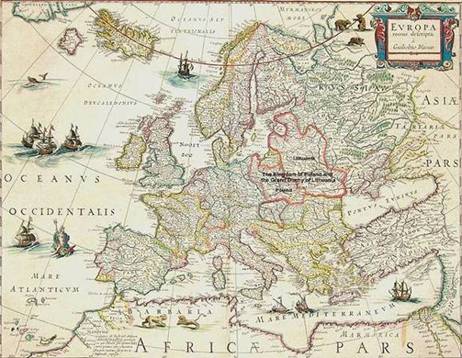
Text: Aage Myhre
International Lithuania got its “flying start” already in 1323, when Grand Duke Gediminas founded Vilnius as Lithuania’s capital city, and immediately decided to invite merchants, craftsmen, bankers, farmers, and soldiers from all Europe to come to the new capital, guaranteeing all freedom of beliefs and good working conditions. Vilnius became international, though with less of German or Scandinavian influence, as one could expect, rather influenced by Rome – greatly different from the other two Baltic capitals.
- Bookmark :
- Digg
- del.icio.us
- Stumbleupon
- Redit it
- Posted by - (1) Comment
Many nations have had
a strong influence in
and on Lithuania
VilNews will this autumn and winter publish articles about impacts of foreign nations and cultures here in Lithuania. We also welcome you, dear readers, to share with us information you may have about ‘foreign footprints’ in Lithuania.
Please write us with your ideas and comments!
The illustrations below show some characteristics of the nations we will be writing about, in combination with the Lithuanian flag colours...
The articles marked blue have already been published
(click to read them)
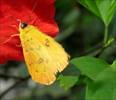 ARTICLE NO. 1 HUNGARY |
 ARTICLE NO. 2: ITALY |
 ARTICLE NO. 3: KARAIMS |
|
 ARTICLE NO. 4: DENMARK |
 ARTICLE NO. 5: JAPAN |
 ARTICLE NO. 6: CANADA |
|
 ARTICLE NO. 7: GERMANY |
 ARTICLE NO. 8: CHINA |
 ARTICLE NO. 9: INDIA |
|
 ARTICLE NO. 10: SWEDEN |
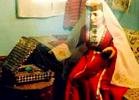 ARTICLE NO. 11: TATARS |
 ARTICLE NO. 12: USA |
|
 ARTICLE NO. 13: RUSSIA |
 ARTICLE NO. 14: BELARUS |
 ARTICLE NO. 15: ICELAND |
|
 ARTICLE NO. 16: TURKEY |
 ARTICLE NO. 17: FINLAND |
 ARTICLE NO. 18: THE UK |
|
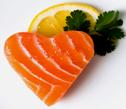 ARTICLE NO. 19: NORWAY |
 ARTICLE NO. 20: POLAND |
 ARTICLE NO. 21: FRANCE |
|
|
|
ARTICLE NO. 22: THE LITVAKS (LITHUANIAN JEWS) |
||
- Bookmark :
- Digg
- del.icio.us
- Stumbleupon
- Redit it
I found my family!
- Posted by - (0) Comment
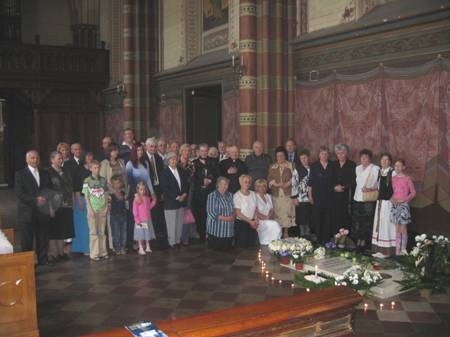
My first meeting with my family in Lithuania
- we had been searching for 90 years
By KR Slade
It's Saturday, 28 May 2005, 6pm, in Lithuania. I've just returned to my room in the capital city, Vilnius, from my nine-hour day-trip to Kaunas, Lithuania's second-largest city. Kaunas had been the capital of the first Republic of Lithuania, during the inter-world-wars period, and is 90+ percent ethnic-Lithuanian -- compared to 60 percent in Vilnius. Lithuania is, now and since 1990, in its ‘third’ republic, again free, after its second -- and fake --‘Lithuanian Soviet Socialist Republic’, when it was occupied and annexed by the Union of Soviet Socialist Republics. Kaunas is called ‘the heart of Lithuania’, especially by the people of Kaunas. Today is a very special day for my family in Lithuania: the fifth anniversary of the death of our family’s Cardinal Vincentas Sladkevicius.
- Bookmark :
- Digg
- del.icio.us
- Stumbleupon
- Redit it
- Posted by - (0) Comment
The
village
voice…
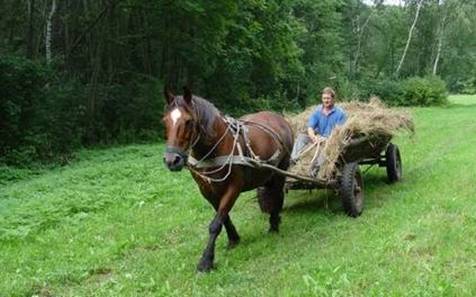
VilNews is from time to time brining articles under the heading 'The Village Voice'. The articles are written by a retired Englishman, David Holliday, who for the past sixteen years has lived with his wife Migle in the village Lapiai 30 km from Klaipeda. We believe that you, dear reader, appreciate David's subtle tales and stories from his life out there – so far off the beaten track...
- Bookmark :
- Digg
- del.icio.us
- Stumbleupon
- Redit it
- Posted by - (0) Comment

Lithuania is "China's important trading partner in the Baltic Sea region," He Guoqiang, member of the Standing Committee of the Political Bureau of the CPC Central Committee and secretary of the CPC's Central Commission for Discipline Inspection, said during a last year meeting with Lithuanian Prime Minister Andrius Kubilius.
Lithuania offers China fast route into Europe
Lithuania offers Chinese partners fast route into Europe and a thriving high-tech market.
Next month sees the 21st anniversary of the establishment of bilateral relations between China and Lithuania, and it will come with wishes for a healthy growth in trade between the two countries.
When Chinese companies are reaching out for a bigger world market, Lithuania, the European Union's prime transport center on the Baltic Sea, is ready and willing to link them to the European market at least.
"Taking Lithuania as a bridge to enter the EU market, especially Eastern Europe, benefits both China and Lithuania," says Danas Vaitkevicius, commercial attache and head of the commercial section of the Lithuanian embassy in Beijing.
Read more…
- Bookmark :
- Digg
- del.icio.us
- Stumbleupon
- Redit it
VilNews e-magazine is published in Vilnius, Lithuania. Editor-in-Chief: Mr. Aage Myhre. Inquires to the editors: editor@VilNews.com.
Code of Ethics: See Section 2 – about VilNews. VilNews is not responsible for content on external links/web pages.
HOW TO ADVERTISE IN VILNEWS.
All content is copyrighted © 2011. UAB ‘VilNews’.

 Click on the buttons to open and read each of VilNews' 18 sub-sections
Click on the buttons to open and read each of VilNews' 18 sub-sections 






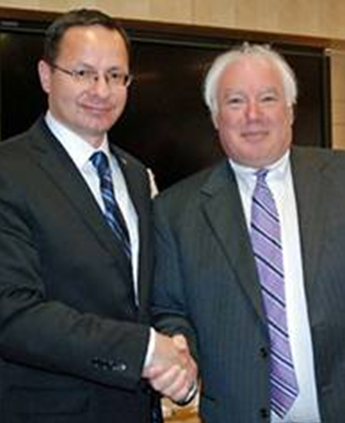
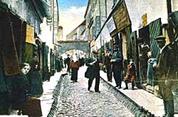
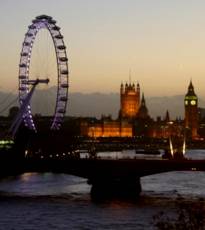
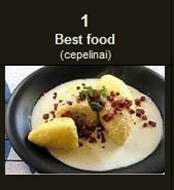
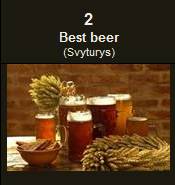
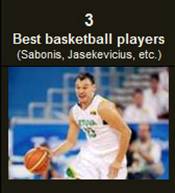
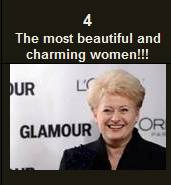
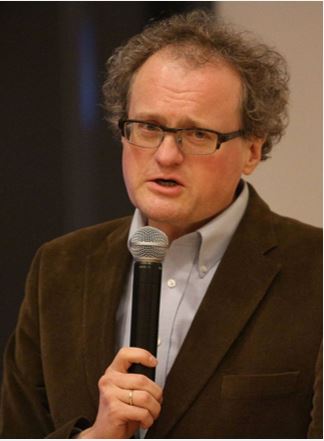

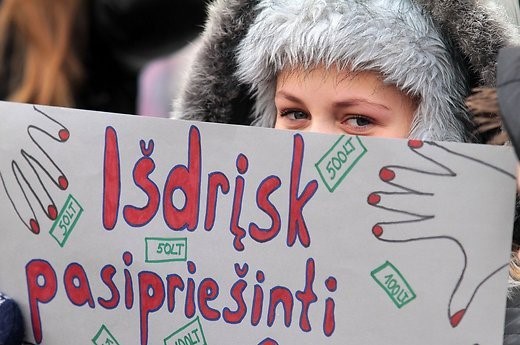


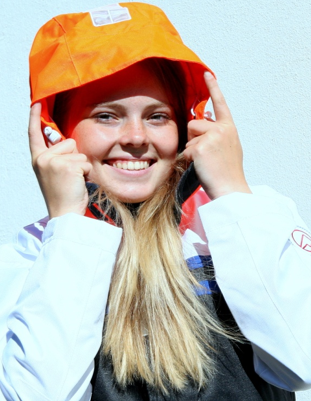
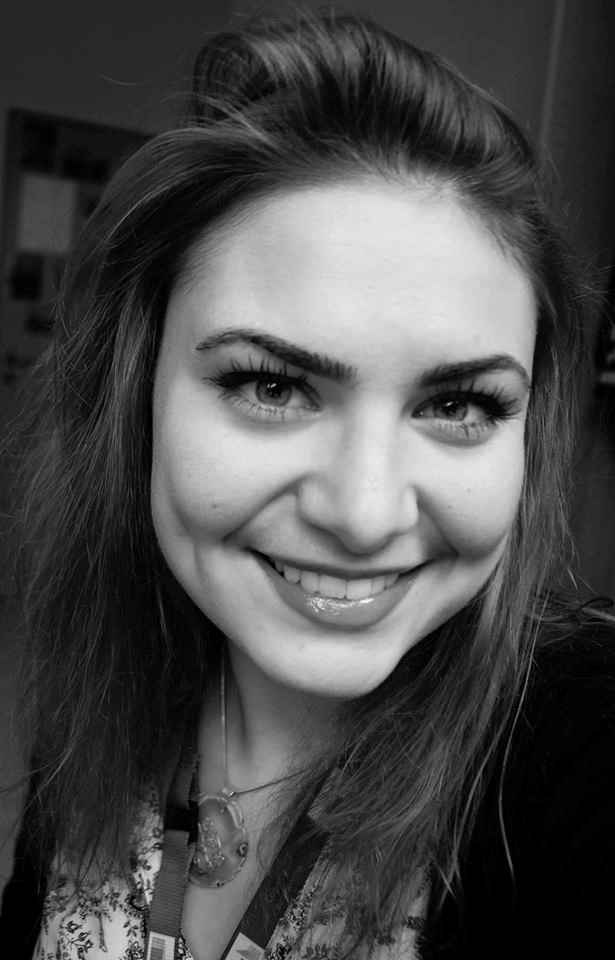

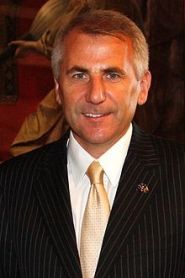
.jpg)
